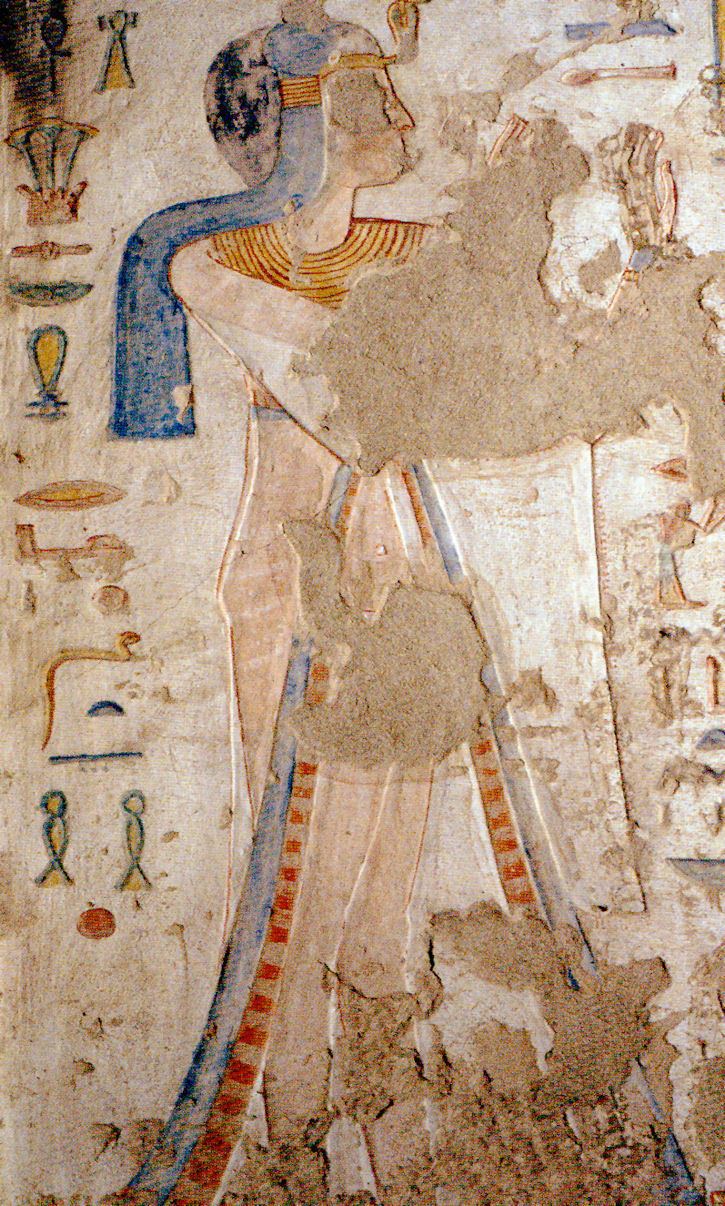Children Ramesses IV | Grandchild Ramesses V | |
 | ||
Similar Ramesses III, Ramesses IV, Duatentopet, Ramesses V | ||
Kaysha drunk in love beyonc kizomba cover
Tyti was an ancient Egyptian queen of the 20th dynasty. It was once uncertain which pharaoh was her husband, but he can now be identified as Ramesses III based on new evidence published in the 2010 issue of the Journal of Egyptian Archaeology (JEA). Her titles shown that she was the daughter, sister, wife and mother of kings. According to one theory she was married to Ramesses X, both she and her husband were the children of Ramesses IX, and their son was Ramesses XI. But another theory by Jehon Grist placed her earlier in the 20th dynasty and identifies her as a daughter-wife of Ramesses III and the mother of Ramesses IV, based on the similarities in style of her tomb and those of princes who lived during this period. However, judging from the age of their child this would mean that Ramesses married his daughter before he ascended the throne, and father-daughter marriages occurred only between pharaohs and their daughters. Tyti is depicted with a type of crown that is, according to one theory, an attribute of princess-queens (19th dynasty princess-queen Nebettawy was shown with this crown and 18th dynasty Sitamun wore an earlier version of it), but it is weak evidence.
Contents
Now, however, new scholarly research printed in the 2010 issue of JEA clearly establishes that Queen Tyti was in fact Ramesses III's wife based on certain copies of parts of the tomb robbery papyri (or Papyrus BM EA 10052)—made by Anthony Harris—which discloses confessions made by Egyptian tomb robbers who broke into Tyti's tomb and emptied it of its jewellery. Tyti is named as a queen of pharaoh Ramesses III which means that she was most likely king Ramesses IV's own mother since Ramesses VI is known to be the son of another queen of Ramesses III named Iset Ta-Hemdjert. Even the Egyptologist Aidan Dodson who doubted Grist's theory on the identity of Tyti's royal husband now accepts this new evidence since it comes from newly deciphered notes of this tomb robbery papyrus made by Anthony Harris.
Given her place as the wife of Ramesses III, Leblanc has conjectured that Tyti is the mother of Khaemwaset, Amenherkhepshef and Ramesses-Meryamen. This is based on similarities with regard to their decorative programs.
Adele hello
Tomb QV52
Tyti's tomb is designated QV52 in the Valley of the Queens and her titles were: King's Daughter; King's Sister; King's Wife; King's Mother; God's Wife, Lady of the Two Lands. The tomb had been described by Champollion (tomb 3), Lepsius (number 9), Wilkinson (number 12) and Hay (number 2). The tomb consists of a corridor, side chambers, a hall and an inner (burial) chamber.
The corridor has a doorway which opens up to a further stretch of corridor which has been described as an antechamber. The walls are decorated with deities that form pairs with one on the north wall and the other on the south wall. After a seated winged goddess Ma’at, we find the gods Ptah (South) and Thoth (North) who represent the underworld, then Ra-Harakhti and Atum who are solar deities, followed by Imset and Hapy and by Duamutef and Qebehsenuef, the Four Sons of Horus. The parade of deities is concluded by Isis and Nephthys.
The decorations in the hall consist of protective deities. Included are for instance the gods Herymaat and Nebneru ("Lord of Terror"). Herymaat represents the rebirth of Queen Tyti. The doorways to the side chambers (or annexes) are decorated with guardians that are reminiscent of the Book of the Dead. The entrance to the final chamber is decorated with the Four Sons of Horus. Imset and Duamutef on the south side of the entrance and Hapy and Qebehsenuef on the north side.
The decorations or the side chambers include netherworld gods, images of Canopic chests and the Souls of Pe and Nekhen. One of the side chambers also includes a scene showing the Queen as a (male) Iunmutef priest. In the inner chamber the Queen again appears before several deities. The rear wall contains a scene depicting Osiris. He is seated on a throne and assisted by Thoth, Nephthys, Neith and Serket.
The tomb was reused during the Third Intermediate Period. A pit was dug in the Inner Chambers and excavations have yielded a variety of funerary items, including sarcophagi and personal items.
